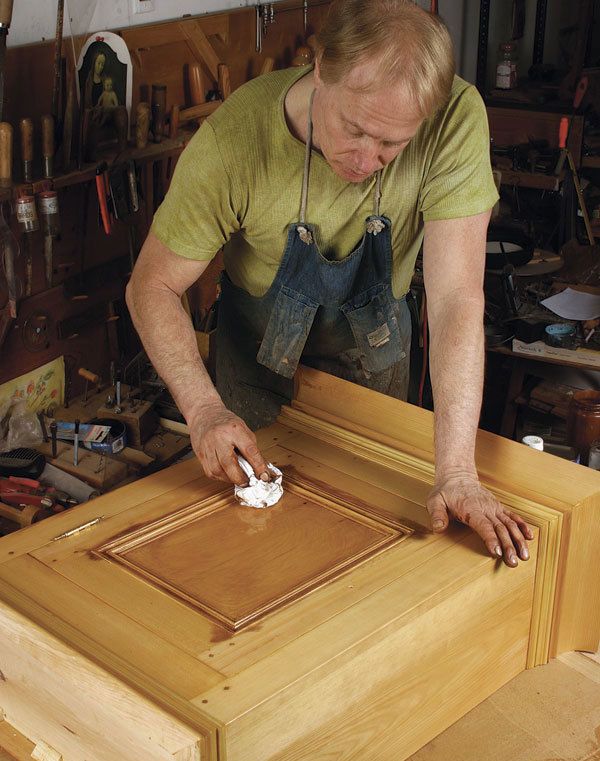Finishing pine: 4 methods, 0 splotching
Tips, tricks, and techniques (and tea!) for applying an even finish to pine—including antiquing it!
For such a ubiquitous wood, pine can be a blessing and a curse. It can build up your confidence like no other wood when working it, but all that can come tumbling down when you apply a finish. Its softness, pitchiness, and unevenly dense growth rings are challenges that may leave your finished piece looking less than the work you put into it. As Jeff Jewitt notes in Pitfalls of Finishing Pine, “It is ironic that the wood many first-time finishers tackle is one of the more challenging woods to finish: a piece of unfinished pine.” My personal surefire methods are leaving a hand-planed surface or milk paint. But having two arrows in the quiver isn’t enough, especially with such a common, versatile wood. If you want more, keep scrolling for some of the best guidance I’ve found regarding finishing pine, from surface prep to the last brush stroke.
Anyone for Tea?
by Sean Clarke
Best Finish for Pine
by Tom Wisshack
For this article, don’t just take my word. Check out what subscriber Rick Bowen says about it in FWW #295: “About 10 years ago, I built a pine bookshelf/cabinet and followed the instructions of author Tom Wisshack in applying his “Best Finish for Pine” (FWW #193, Oct. 2007). On completion, I vowed “never again.” The multiple steps—mixing, diluting, layering, sanding, waiting between layers—seemed an unnecessarily laborious, tedious, and complicated process. Well, a decade later, I sit here next to that furniture piece that I’ve come to love, and I appreciate Mr. Wisshack’s invaluable guidance. I’ve just come up from my shop, where I spent the afternoon starting work on that tedious, multiple-step finish on a bookshelf for my granddaughter. And I’m certain the results will be well worth the effort.”
Foolproof Recipes for 3 Favorite Finishes
by Peter Gedrys
OK OK fine, this article isn’t explicitly about pine, which shares the stage with white oak, pine, and mahogany. But in this case, that sharing doesn’t mean split attention, it means added value. On the one hand, you get a specific recipe for pine, including specific examples and a sample board that shows the results along the way, letting you compare your results to Gedrys’s. But on the other hand is the value added: explicit insight into Gedrys’s approach to gels and stains. In other words, you don’t get just the how, but the why. This is the whole “teach a person to fish” metaphor, just as an article. Let it hook you.
Re-creating a Shaker Finish
by Linda Coit
Another curve ball. Coit’s article is less a finishing recipe than a finishing story. It’s a deep, detailed look at a pro re-creating the finish on a piece of furniture made by another pro, Christian Becksvoort. And it’s not all pine. But to me, if you’re into antiquing, fauxtina, and re-creations, Coit’s piece is invaluable. There’s a mix of specific products she uses along with why she uses them. Her article’s like the Gedrys one above, but perhaps less about instruction than informing. I’m still getting a footing in finishing techniques, but I suspect as I learn more, I’ll see even more of Coit’s wisdom each time I read her article.





























Log in or create an account to post a comment.
Sign up Log in